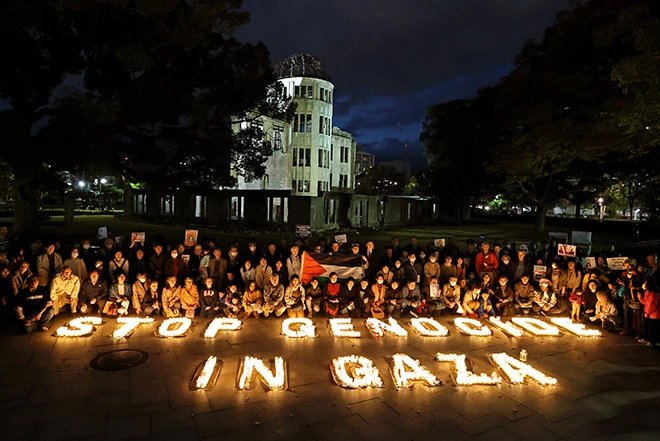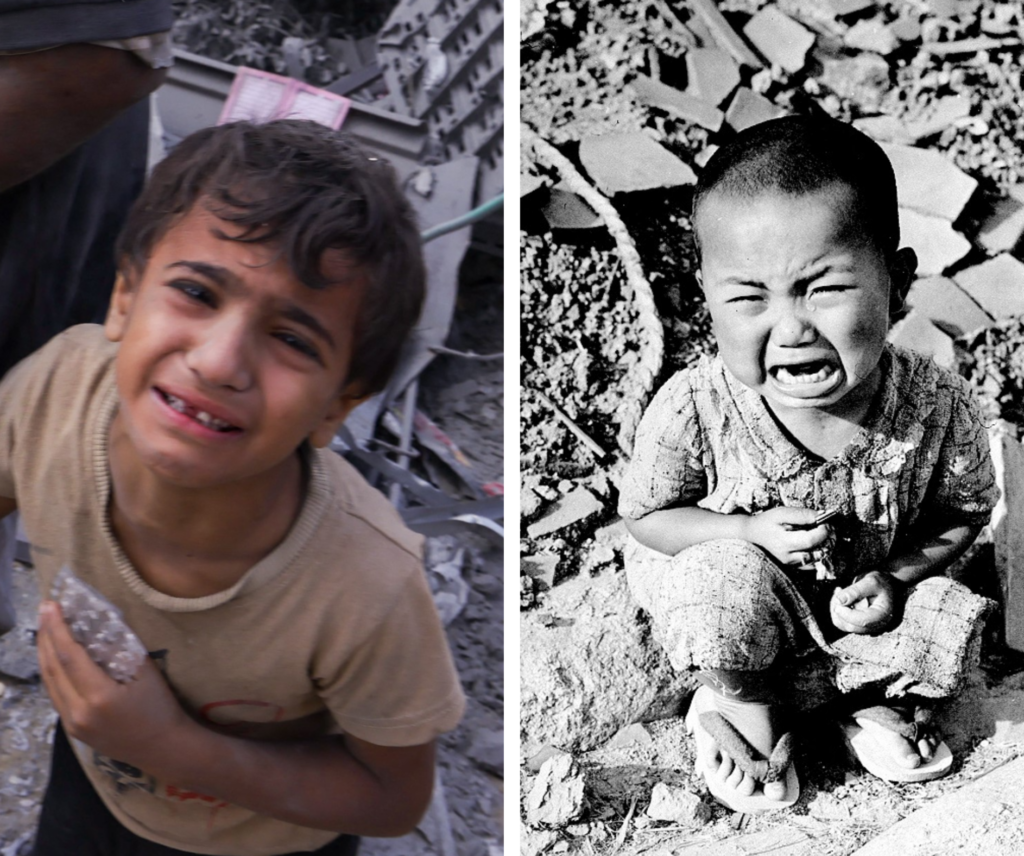By Saqlain Imam
London (London Post) – On August 6, 1945, as World War II neared its end and Japan’s defeat was all but certain, the United States made a chilling decision: to unleash the deadliest weapon ever created on a civilian population. The B-29 bomber Enola Gay, named after its pilot’s mother, dropped the first atomic bomb, codenamed “Little Boy,” over Hiroshima. At 8:15 a.m., the bomb detonated 600 meters above Shima Hospital with a force equivalent to 15,000 tons of TNT, incinerating the city in a blaze of fire and ash. Nearly 70,000 people, mostly innocent civilians, were killed instantly. Within months, the death toll climbed to 140,000 as survivors, known as hibakusha, succumbed to radiation sickness, burns, and injuries. The blast obliterated everything within a 1.5-mile radius, transforming a vibrant city into a graveyard in seconds. Three days later, on August 9, a second atomic bomb devastated Nagasaki, deepening the wound. Japan surrendered soon after, but the true victory belonged to a new era of global dominance, etched in radioactive ash.
This was no military necessity—it was a calculated display of technological and imperial might, a massacre framed as a geopolitical “message.” It was political theater where death became a tool to demonstrate who held the power to annihilate humanity. This is necropolitics, the deliberate exercise of control through the authority over life and death, where powerful states decide who lives and who dies. Hiroshima and Nagasaki were not mere tragedies; they were the starkest demonstrations of state power turning death into policy, a ruthless declaration that the United States would dictate the fate of nations.

Today, this same sinister logic unfolds in Gaza, where the Israeli state, under the guise of “self-defense,” wages a campaign of systematic destruction against 2.3 million Palestinians. Neighborhoods are razed, hospitals, schools, and refugee camps are bombed, and over 38,000 people—70% of them women and children, according to UN data—have been killed. The International Court of Justice has heard accusations of genocide, yet major global powers remain either silent or complicit in this brutality. Just as the atomic bombs were cloaked in moral justifications in 1945, Gaza’s devastation is rationalized as a “war on terror,” masking the necropolitical reality: the arrogant determination of which lives are deemed expendable.
In 1998, the author, then president of the Lahore Press Club, met a young Japanese woman, a third-generation hibakusha whose grandmother survived Hiroshima but passed down a legacy of suffering caused by radiation. She was part of a Peace Boat delegation, a Japanese NGO advocating for nuclear abolition, visiting Lahore after Pakistan’s nuclear tests that year. Their mission was to share the horrific consequences of atomic warfare, as Japan had endured in 1945. Yet, no major Pakistani institution was willing to welcome them. The author hosted the delegation and organized a public exhibition of original photographs from Hiroshima and Nagasaki’s destruction—images that did not merely document suffering but challenged the world’s collective conscience.
Hiroshima, Nagasaki, and Gaza stand as grim bookends to a century of unresolved atrocities. The ruins of these places bear witness to how civilization, morality, and humanity can be reduced to ashes when death is weaponized as policy. The atomic bombs were not the end of war but the dawn of a world order where imperial powers inscribe their dominance through annihilation. In Gaza, the targeting of civilians, destruction of infrastructure, and erasure of entire communities echo the same necropolitical logic: the normalization of mass death to assert control. The hibakusha of Hiroshima and the survivors of Gaza share a tragic kinship, their lives marked by the decisions of those who deem them disposable. These events pose an urgent question: how long will humanity tolerate rulers who govern through death? The ashes of Hiroshima and the rubble of Gaza demand justice, a rejection of the lie that some lives matter less, and a reckoning with the necropolitics that continues to fertilize one atrocity after another.
Saqlain Imam is an ex BBC Journalist
Original URL: https://londonpost.news/from-hiroshima-to-gaza-the-reign-of-death/
INPS Japan


